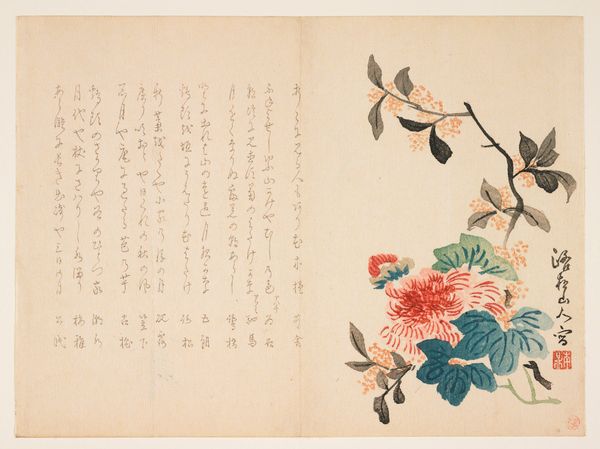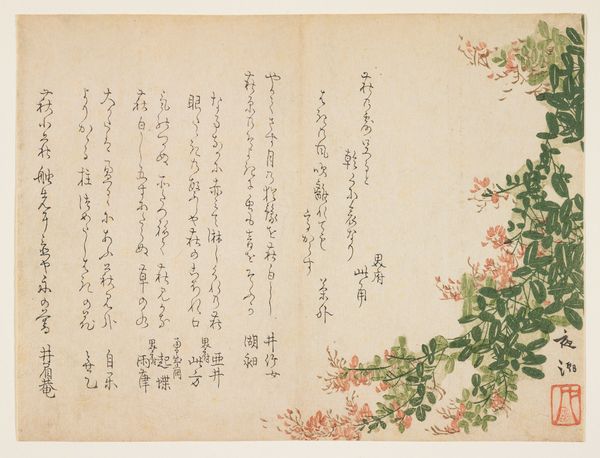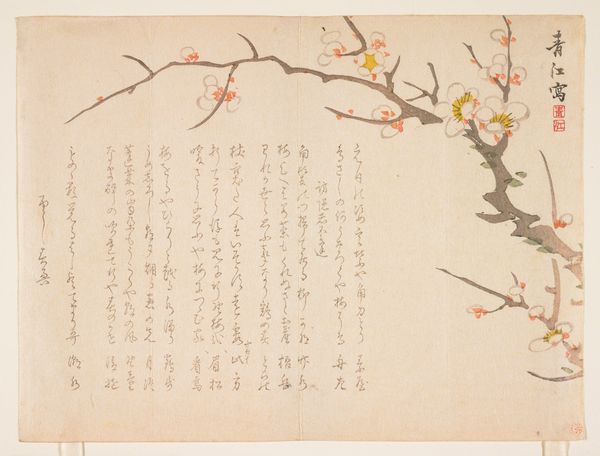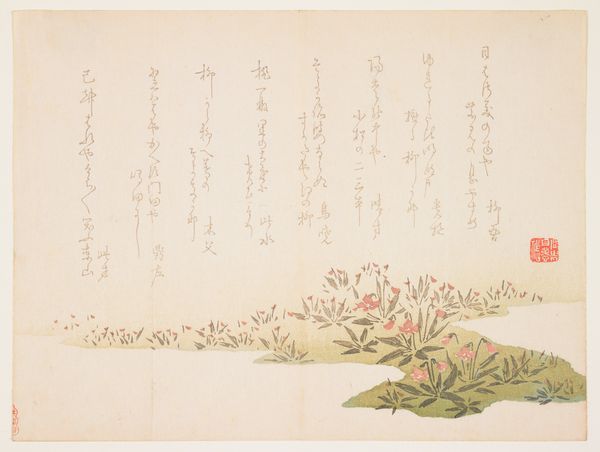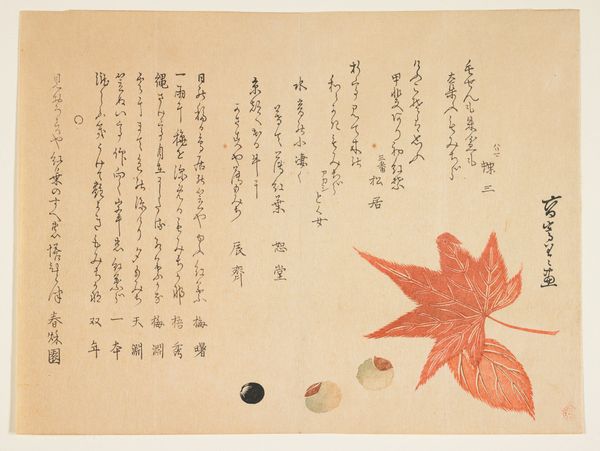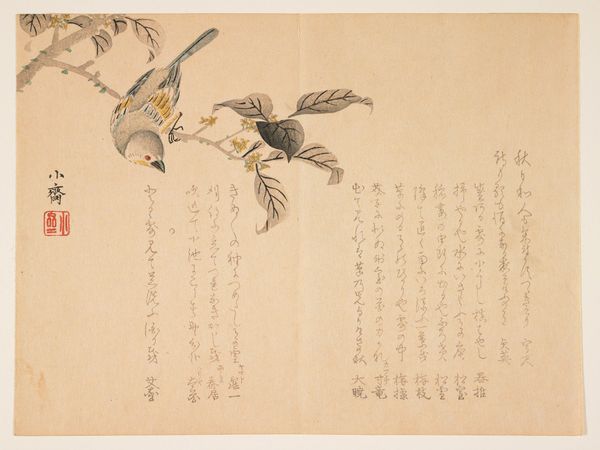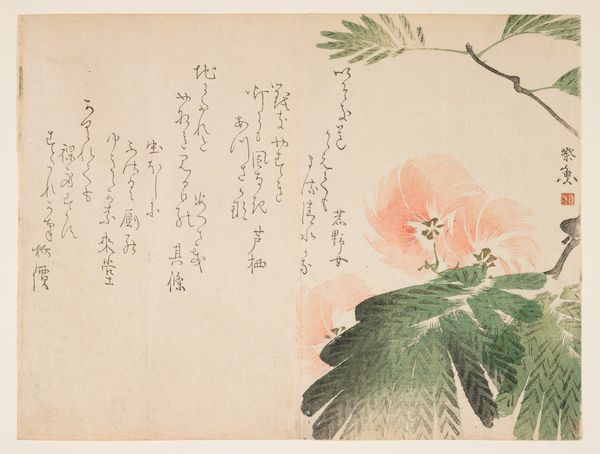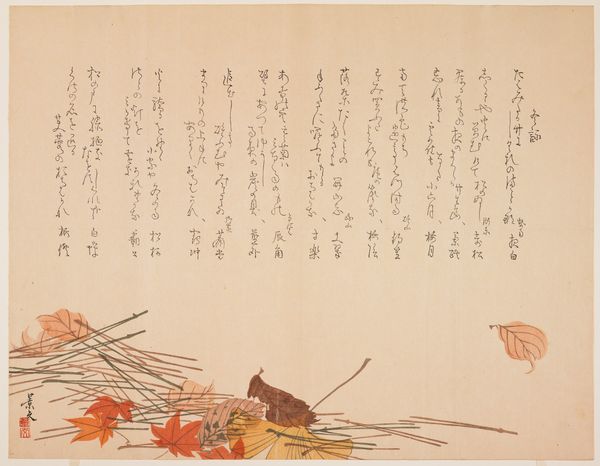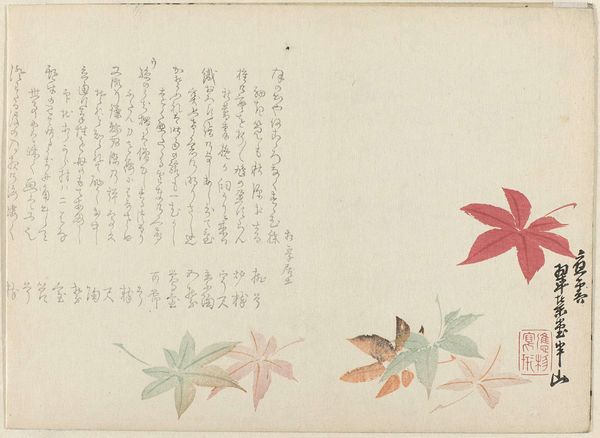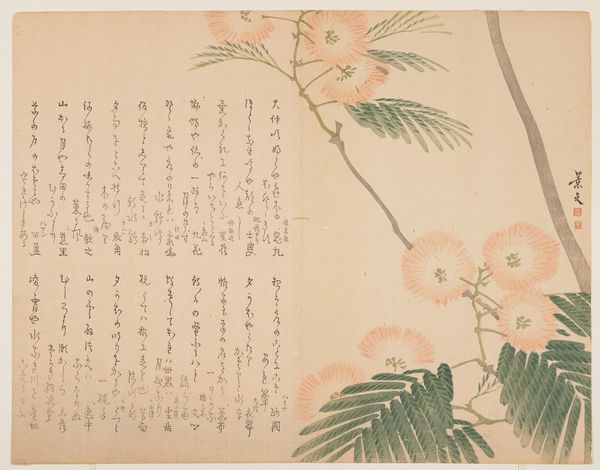
print, watercolor, ink
#
water colours
# print
#
asian-art
#
landscape
#
ukiyo-e
#
watercolor
#
ink
#
watercolor
Dimensions: 7 3/8 x 9 3/4 in. (18.7 x 24.8 cm) (image, sheet)
Copyright: Public Domain
Curator: Let’s talk about "White-eye on a Branch," a 19th-century print housed here at the Minneapolis Institute of Art and attributed to Suitō. Editor: My first impression is one of delicate stillness. The muted colors and the composition's spareness create a tranquil atmosphere. It seems fragile, almost ephemeral. Curator: Absolutely. Consider that it employs watercolor and ink, very delicate mediums in and of themselves, printed via woodblock technology which saw tremendous advancements in 19th century Japan. The choice of a white-eye bird is also key, they are very common birds, accessible across different populations, speaking to themes of class and accessibility through art. Editor: Thinking about those materials – the ink, the paper, the wood – and the labor involved, it points to a specific type of artistic production circulating within a particular economic framework. Ukiyo-e prints were made for consumption. Curator: Indeed, Ukiyo-e, "pictures of the floating world," captured transient pleasures and everyday life, a reflection of a burgeoning merchant class. They offer a glimpse into the sociopolitical dynamics that are also reflected in contemporary literature and political activism of the era. We should not look at these in isolation. Editor: That context is crucial. These prints weren't just aesthetic objects. The artist also makes intentional aesthetic decisions within this matrix, you can clearly see it in the layering of colors within the branch itself and the varying widths of stroke that compose the characters, reflecting their deep artistic experience and decisions in portraying the piece for a larger audience. Curator: And it invites discourse. Are we looking at something celebratory, the emergence of middle-class values, or an idealized portrayal masking social tensions? Consider who had access to nature versus who was forced to work and how might that apply here. The text and placement become active parts of an encoded language. Editor: Right. How does this relate to production and consumption, of resources, of power, of artistic goods themselves. Curator: It is never a straightforward relationship, is it? Ultimately, for me, this image becomes a meeting point – where nature, art, class, and labor intertwine. It challenges us to investigate broader implications. Editor: For me, reflecting on materiality encourages a deep, intimate looking at art, focusing not on aesthetics but production. This reflection gives rise to even larger questions.
Comments
minneapolisinstituteofart almost 2 years ago
⋮
White-eyes are small birds native to tropical, subtropical and temperate southern and eastern Asia-including Japan. Here, the artists depicted a white-eye grasping onto a branch in an almost upside-down position, as if it just alighted to feast on the ripe red fruit. The leaves on the branch are turning orange and brown, suggesting the coming of autumn. What makes this rather simple composition charming is its delicate coloring. The light green of the bird beautifully contacts with the autumnal colors of the branch. The pale pink gradation applied on the bird's underside accents its slight plumpness, evidence of its preparations for winter.
Join the conversation
Join millions of artists and users on Artera today and experience the ultimate creative platform.

